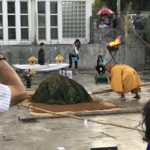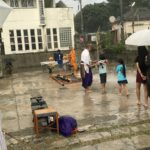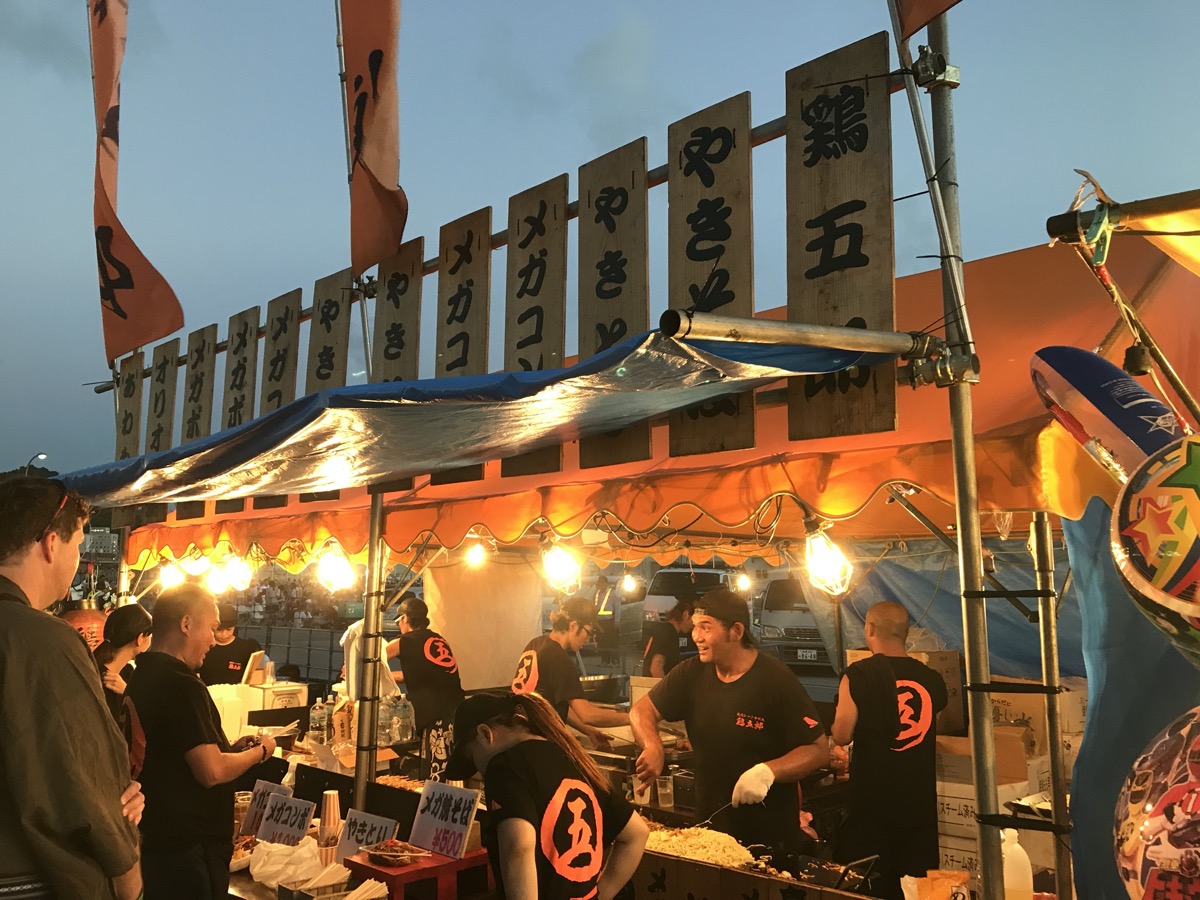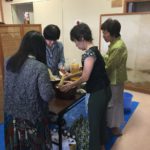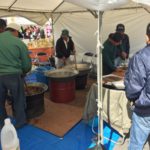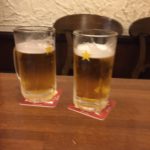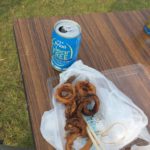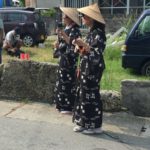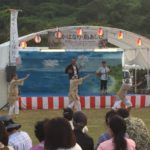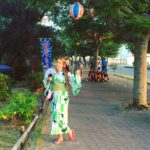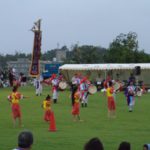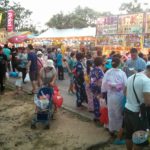宮城島 Miyagi-jima is a small island connected by bridge to the Okinawa main island via Henza-jima.
This year is the second annual summer eisa matsuri, called たかはなり島あしび Takahanari Shima Ashibi.
高離り島 (たかはなり島) refers to Miyagi-jima. あしび means “to play” in Okinawa language (coming from the Japanese, 遊ぶ asobu). So basically, the name of the festival is like “come play on Miyagi island!”
At 3 pm, eisa groups start to perform along the roads in 3 areas of the island. There is a main parking area at the old (abandoned) elementary school for the festival. FYI, this is NOT actually in google maps… so actually pay attention to the address given… unlike myself, who figured, I will just follow the signs, how hard can it be, it is a tiny island, right?? Well, luckily when you get close, the signs had a pouch with printed out maps, directions, locations, schedules and the whole bit, otherwise I would have stayed lost (despite this being a tiny island). Luckily, we were not the only lost souls, other Japanese/Okinawans were also getting these maps and looking confused. Anyway, it was easy once we figured the approximate location in the car navi system.
Anyway… so back to the street performances. These were simply along residential, narrow streets of the island, from 3-5pm. People emerged from houses and cars to watch and listen to the eisa performers. During this time, my husband (over 6 feet tall, a giant by Japanese standards) and myself (although of average US height, still towers over most Japanese women) decidedly stood out as the only foreigners in the small crowd. It was a bit hot, but at least there was some small breeze off the ocean making it a bit more tolerable. We arrived a bit late (nearly 4pm, due to the maps issue), which was probably a good thing considering the Okinawan heat. In spite of seeing many eisa performances since arriving nearly 3 years ago, I am still fairly fascinated by it and all of the variations you see around the island.
Around 5pm, the main stage area of the festival grounds was getting started, and tents with food, drinks, and local products encircled the field. This festival was unlike many of the other more “popular” summer matsuri, as here it was almost entirely LOCAL business and products! Wow, so nice– too often with the larger matsuri, big companies come in and sell food/drink (with bigger crowds, the mom&pop places have a hard time competing), and they are rather subpar. Today, it was different and amazing.
The famous ougon-imo (黄金芋, orange sweet potato similar to annou-imo and “American” orange sweet potatoes) from the neighboring island made an appearance, as well as many other small businesses. Ika (squid) caught from the surrounding waters and mozuku (seaweed special to Okinawa) was also prominent among food sellers. We had squid karaage (fried squid rings), beniimo dango (fried purple sweet potato mochi), baked ougon-imo, sata andagi (Okinawa doughnut) flavored with dragonfruit, ohagi (sweet sticky rice balls, these were flavored with ougon-imo), and chicken wrapped in fried shredded ougon-imo (um… picture like a chicken nugget but if instead of breading you replaced that with sweet potato hashbrowns). Everything we tried was delicious, my husband gave it his highest rating. He was initially a bit reluctant to be dragged to this small festival, as it was about a 45-minute car ride north of our house. I guess I drag him to a lot of summer matsuri…
As we were eating, the main stage shows played. There was eisa, local dancing, sanshin, chondora (eisa clowns), fan dance, and more. It was really quite nice, especially once the sun sunk down beneath the horizon and it cooled down a bit.
I guess it was a bit obvious the lack of foreign guests (besides us, 2 american guys with their Okinawan wives). We were approached by a writer for one of the travel websites, as she had noticed us watching the street eisa earlier. She spoke to me in Japanese, mixed with a little English, and I explained my situation in Okinawa, and how I had found out about this matsuri (online, from an event website in Japanese). She lamented the lack of English resources for finding these types of events, and I agreed, as I find these local events extremely interesting and a great chance to learn more about tradition and culture of the islands. She took our picture and gave me a card; she was a sweet person. Later she emailed a link to the article she wrote and our picture with caption was published on the travel website.
Evenings like this type of summer festival are special, and gives a chance to glimpse how life really is in Okinawa. At these events you can see the real Okinawa, not the tourist view.






